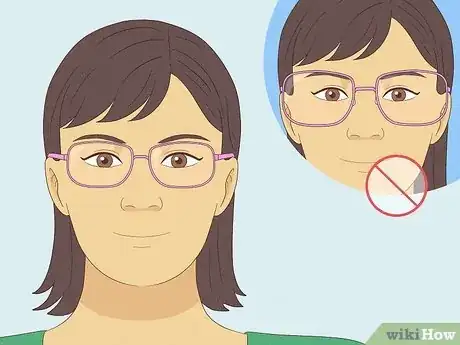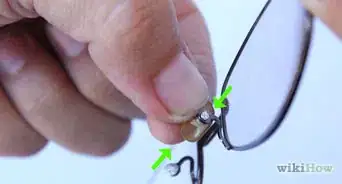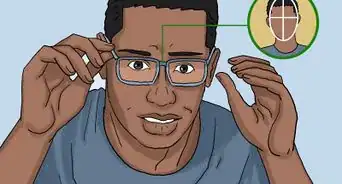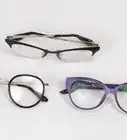This article was co-authored by David Felsted, DO and by wikiHow staff writer, Hannah Madden. Dr. David Felsted is a Comprehensive Ophthalmologist based in Flagstaff, Arizona. He specializes in cataract and refractive surgery, micro-invasive glaucoma surgery, ophthalmic lasers, dry eye disease, diabetic retinopathy, and ocular trauma. Dr. Felsted holds a BS in Accounting from Brigham Young University and a Doctor of Osteopathic Medicine from Midwestern University. He completed his Ophthalmic residency at The Medical College of Georgia.
There are 7 references cited in this article, which can be found at the bottom of the page.
This article has been viewed 1,198 times.
Just picked up your new glasses? A brand new prescription or a fancy new set of frames might be just what you need to improve your vision and boost your confidence. But if your new glasses are giving you headaches, blurred vision, or dizziness, you’re not alone. Most people experience some issues while adjusting to new glasses, even if they’ve worn glasses for years. Fortunately, we’ve got the tips to help you adjust to your new glasses fast. We’ll also let you know what’s normal and when it’s time to see your optometrist to talk about your symptoms. For everything you need to know about getting used to new glasses, read on!
Things You Should Know
- Wear your glasses as often as possible every day. Clean your glasses regularly to prevent any additional issues.
- Give yourself 2 weeks to get used to new glasses.
- While you’re getting used to new glasses, you might experience eye strain, blurry vision, or dizziness, all of which are normal.
- Make an appointment with your optometrist if your prescription is wrong or you’re still having issues after 2 weeks.
Steps
References
- ↑ https://aapos.org/glossary/glasses-for-children
- ↑ https://www.goodhousekeeping.com/home/cleaning/a20167647/how-to-clean-glasses/
- ↑ https://www.2020detroit.com/how-long-does-it-take-for-your-eyes-to-adjust-to-new-glasses/
- ↑ https://www.2020detroit.com/how-long-does-it-take-for-your-eyes-to-adjust-to-new-glasses/
- ↑ https://www.2020detroit.com/how-long-does-it-take-for-your-eyes-to-adjust-to-new-glasses/
- ↑ https://www.unr.edu/ndsip/english/resources/tips/promoting-wearing-of-glasses
- ↑ https://www.2020detroit.com/how-long-does-it-take-for-your-eyes-to-adjust-to-new-glasses/
- ↑ https://www.hey.nhs.uk/patient-leaflet/your-childs-glasses-information-for-parents-and-guardians/
- ↑ https://www.2020detroit.com/how-long-does-it-take-for-your-eyes-to-adjust-to-new-glasses/
- ↑ https://www.2020detroit.com/how-long-does-it-take-for-your-eyes-to-adjust-to-new-glasses/
- ↑ https://www.aao.org/eye-health/ask-ophthalmologist-q/blurry-vision-with-progressive-lenses
- ↑ https://www.aao.org/eye-health/tips-prevention/common-eye-vision-myths-facts
- ↑ https://aapos.org/glossary/glasses-for-children




































































